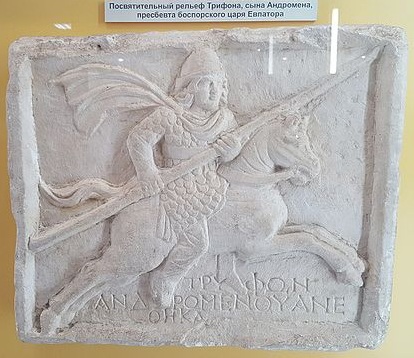
| SARMATIANS
Depiction of a Sarmatian from a Roman sarcophagus, 2nd century AD
Pontic Steppe
Pontic Steppe The
Sarmatians Latin: Sarmatae, Sauromatae were a large Iranian confederation
that existed in classical antiquity, flourishing from about the
5th century BC to the 4th century AD.
Their territory, which was known as Sarmatia to Greco-Roman ethnographers, corresponded to the western part of greater Scythia (it included today's Central Ukraine, South-Eastern Ukraine, Southern Russia, Russian Volga and South-Ural regions, also to a smaller extent north-eastern Balkans and around Moldova). In the 1st century AD, the Sarmatians began encroaching upon the Roman Empire in alliance with Germanic tribes. In the 3rd century AD, their dominance of the Pontic Steppe was broken by the Germanic Goths. With the Hunnic invasions of the 4th century, many Sarmatians joined the Goths and other Germanic tribes (Vandals) in the settlement of the Western Roman Empire. Since large parts of today's Russia, specifically the land between the Ural Mountains and the Don River, were controlled in the 5th century BC by the Sarmatians, the Volga–Don and Ural steppes sometimes are also called "Sarmatian Motherland".
The Sarmatians were eventually decisively assimilated (e.g. Slavicisation) and absorbed by the Proto-Slavic population of Eastern Europe.
Etymology :
Map of the Roman empire under Hadrian (ruled 117 – 138 AD), showing the location of the Sarmatae in the Ukrainian steppe region Sarmatae probably originated as just one of several tribal names of the Sarmatians, but one that Greco-Roman ethnography came to apply as an exonym to the entire group. Strabo in the 1st century names as the main tribes of the Sarmatians the Iazyges, the Roxolani, the Aorsi and the Siraces.
The Greek name Sarmatai sometimes appears as "Sauromatai", which is almost certainly no more than a variant of the same name. Nevertheless, historians often regarded these as two separate peoples, while archaeologists habitually use the term 'Sauromatian' to identify the earliest phase of Sarmatian culture. Any idea that the name derives from the word lizard (sauros), linking to the Sarmatians' use of reptile-like scale armour and dragon standards, is almost certainly unfounded.
Both Pliny the Elder (Natural History book iv) and Jordanes recognised the Sar- and Sauro- elements as interchangeable variants, referring to the same people. Greek authors of the 4th century (Pseudo-Scylax, Eudoxus of Cnidus) mention Syrmatae as the name of a people living at the Don, perhaps reflecting the ethnonym as it was pronounced in the final phase of Sarmatian culture.
English scholar Harold Walter Bailey (1899–1996) derived the base word from Avestan sar- (to move suddenly) from tsar- in Old Iranian (tsarati, tsaru-, hunter), which also gave its name to the western Avestan region of Sairima (*salm, – *Sairmi), and also connected it to the 10–11th century AD Persian epic Shahnameh's character "Salm".
Oleg Trubachyov derived the name from the Indo-Aryan *sar-ma(n)t (feminine – rich in women, ruled by women), the Indo-Aryan and Indo-Iranian word *sar- (woman) and the Indo-Iranian adjective suffix -ma(n)t/wa(n)t. By this derivation was noted the unusual high status of women (matriarchy) from the Greek point of view and went to the invention of Amazons (thus the Greek name for Sarmatians as Sarmatai Gynaikokratoumenoi, ruled by women).
Ethnology :
A Sarmatian diadem, found at the Khokhlach kurgan near Novocherkassk (1st century AD, Hermitage Museum) The Sarmatians were part of the Iranian steppe peoples, among whom were also Scythians and Saka. These are also grouped together as "East Iranians". Archaeology has established the connection 'between the Iranian-speaking Scythians, Sarmatians and Saka and the earlier Timber-grave and Andronovo cultures'. Based on building construction, these three peoples were the likely descendants of those earlier archaeological cultures. The Sarmatians and Saka used the same stone construction methods as the earlier Andronovo culture. The Timber grave (Srubnaya culture) and Andronovo house building traditions were further developed by these three peoples. Andronovo pottery was continued by the Saka and Sarmatians. Archaeologists describe the Andronovo culture people as exhibiting pronounced Caucasoid features.
Great steppe of Kazakhstan in early spring 2004 The first Sarmatians are mostly identified with the Prokhorovka culture, which moved from the southern Urals to the Lower Volga and then northern Pontic steppe, in the 4th–3rd centuries BC. During the migration, the Sarmatians seem to have grown and divided themselves into several groups, such as the Alans, Aorsi, Roxolani, and Iazyges. By 200 BC, the Sarmatians replaced the Scythians as the dominant people of the steppes. The Sarmatians and Scythians had fought on the Pontic steppe to the north of the Black Sea. The Sarmatians, described as a large confederation, were to dominate these territories over the next five centuries. According to Brzezinski and Mielczarek, the Sarmatians were formed between the Don River and the Ural Mountains. Pliny the Elder (23–79 AD) wrote that they ranged from the Vistula River (in present-day Poland) to the Danube.
The Sarmatians differed from the Scythians in their veneration of the god of fire rather than god of nature, and women's prominent role in warfare, which possibly served as the inspiration for the Amazons.
Origin
:
The
Sarmatian culture was fully formed by the end of the fourth century
BC, based on the combination of local Sauromatian culture of Southern
Ural and foreign elements brought by tribes advancing from the forest-steppe
Zauralye (Itkul culture, Gorohovo culture), from Kazakhstan and
possibly from the Aral Sea region. Sometime between the fourth and
third century BC, a mass migration carried nomads of the Southern
Ural to the west in the Lower Volga and a smaller migration to the
north, south, and east. In the Lower Volga, Eastern nomads either
partly assimilated local Sauromatian tribes, or pushed them into
the Azov Sea and the Western Caucasus, where they subsequently formed
a basis of nomadic association. A merging of the Southern Ural Prokhorovka
culture with the Lower Volga or Sauromatian culture defines local
differences between Prokhorovka monuments of Southern Ural and the
Volga–Don region within a single culture.
A Sarmatian-Parthian gold necklace and amulet, 2nd century AD. Located in Tamoikin Art Fund In 1947, Soviet archaeologist Boris Grakov [citation needed] defined a culture flourishing from the 6th century BC to the 4th century AD, apparent in late kurgan graves (buried within earthwork mounds), sometimes reusing part of much older kurgans. It was a nomadic steppe culture ranging from the Black Sea eastward to beyond the Volga, and is especially evident at two of the major sites at Kardaielova and Chernaya in the trans-Uralic steppe. The four phases – distinguished by grave construction, burial customs, grave goods, and geographic spread – are :
1.
Sauromatian, 6th–5th centuries BC
In Hungary, a great Late Sarmatian pottery centre was reportedly unearthed between 2001 and 2006 near Budapest, in the Üllo5 archaeological site. Typical grey, granular Üllo5 ceramics form a distinct group of Sarmatian pottery found everywhere in the north-central part of the Great Hungarian Plain region, indicating a lively trading activity. A 1998 paper on the study of glass beads found in Sarmatian graves suggests wide cultural and trade links.
Archaeological evidence suggests that Scythian-Sarmatian cultures may have given rise to the Greek legends of Amazons. Graves of armed females have been found in southern Ukraine and Russia. David Anthony notes, "About 20% of Scythian-Sarmatian "warrior graves" on the lower Don and lower Volga contained females dressed for battle as if they were men, a phenomenon that probably inspired the Greek tales about the Amazons."
Language :
The Sarmatians spoke an Iranian language, derived from 'Old Iranian', that was heterogenous. By the 1st century BC, the Iranian tribes in what is today South Russia spoke different languages or dialects, clearly distinguishable. According to a group of Iranologists writing in 1968, the numerous Iranian personal names in Greek inscriptions from the Black Sea coast indicated that the Sarmatians spoke a North-Eastern Iranian dialect ancestral to Alanian-Ossetian. However, Harmatta (1970) argued that "the language of the Sarmatians or that of the Alans as a whole cannot be simply regarded as being Old Ossetian".
Genetics
:
A genetic study published in Nature in May 2018 examined the remains of twelve Sarmatians buried between 400 BC and 400 AD. The five samples of Y-DNA extracted belonged to haplogroup R1a1, I2b, R (two samples) and R1. The eleven samples of mtDNA extracted belonged to C4a1a, U4a2 (two samples), C4b1, I1, A, U2e1h (two samples), U4b1a4, H28 and U5a1.
A genetic study published in Science Advances in October 2018 examined the remains of five Sarmatians buried between 55 AD and 320 AD. The three samples of Y-DNA extracted belonged to haplogroup R1a1a and R1b1a2a2 (two samples), while the five samples of mtDNA extracted belonged to haplogroup H2a1, T1a1, U5b2b (two samples) and D4q.
A genetic study published in Current Biology in July 2019 examined the remains of nine Sarmatians. The five samples of Y-DNA extracted belonged to haplogroup Q1c-L332, R1a1e-CTS1123, R1a-Z645 (two samples) and E2b1-PF6746, while the nine samples of mtDNA extracted belonged to haplogroup W, W3a, T1a1, U5a2, U5b2a1a2, T1a1d, C1e, U5b2a1a1, U5b2c and U5b2c.
In a study conducted in 2014 by Gennady Afanasiev, Dmitry Korobov and Irina Reshetova from the Institute of Archaeology Russian Academy of Sciences, DNA was extracted from bone fragments found in 7 out of 10 Alanic burials on the Don River. Four of them turned out to belong to yDNA Haplogroup G2 and six of them possessed mtDNA haplogroup I.
In 2015, the Institute of Archaeology in Moscow conducted research on various Sarmato-Alan and Saltovo-Mayaki culture Kurgan burials. In these analyses, the two Alan samples from the 4th to 6th century AD turned out to belong to yDNA haplogroups G2a-P15 and R1a-z94, while two of the three Sarmatian samples from the 2nd to 3rd century AD were found to belong to yDNA haplogroup J1-M267 while one belonged to R1a. Three Saltovo-Mayaki samples from the 8th to 9th century AD turned out to have yDNA corresponding to haplogroups G, J2a-M410 and R1a-z94.
Appearance
:
The Alans were a group of Sarmatian tribes, according to the Roman historian Ammianus Marcellinus. He wrote, "Nearly all the Alani are men of great stature and beauty, their hair is somewhat yellow, their eyes are frighteningly fierce".
Greco-Roman
ethnography :
Herodotus (4.110–117) recounts that the Sauromatians arose from marriages of a group of Amazons and young Scythian men. In the story, some Amazons were captured in battle by Greeks in Pontus (northern Turkey) near the river Thermodon, and the captives were loaded into three boats. They overcame their captors while at sea, but were not able sailors.
Their ships were blown north to the Maeotian Lake (the Sea of Azov) onto the shore of Scythia near the cliff region (today's southeastern Crimea). After encountering the Scythians and learning the Scythian language, they agreed to marry Scythian men, but only on the condition that they move away and not be required to follow the customs of Scythian women.
According to Herodotus, the descendants of this band settled toward the northeast beyond the Tanais (Don) river and became the Sauromatians. Herodotus' account explains the origins of their language as an "impure" form of Scythian. He credits the unusual social freedoms of Sauromatae women, including participation in warfare, as an inheritance from their Amazon ancestors. Later writers refer to the "woman-ruled Sarmatae".
Herodotus (4.118–144) later relates how the Sauromatians under their king Scopasis, answered the Scythian call for help against the Persian King Darius I, to repel his campaign in Scythia, along with the Gelonians and the Boudinians. The Persians invaded much of the Sauromatian territory, but were eventually forced to withdraw due to the tribespeoples' tactics of delay and use of a scorched earth policy.
Hippocrates explicitly classes them as Scythian and describes their warlike women and their customs :
Their women, so long as they are virgins, ride, shoot, throw the javelin while mounted, and fight with their enemies. They do not lay aside their virginity until they have killed three of their enemies, and they do not marry before they have performed the traditional sacred rites. A woman who takes to herself a husband no longer rides, unless she is compelled to do so by a general expedition. They have no right breast; for while they are yet babies their mothers make red-hot a bronze instrument constructed for this very purpose and apply it to the right breast and cauterize it, so that its growth is arrested, and all its strength and bulk are diverted to the right shoulder and right arm.
Polybius (XXV, 1) mentions them for the first time as a force to be reckoned with in 179 B.C.
Strabo mentions the Sarmatians in a number of places, but never says much about them. He uses both the terms of Sarmatai and Sauromatai, but never together, and never suggesting that they are different peoples. He often pairs Sarmatians and Scythians in reference to a series of ethnic names, never stating which is which, as though Sarmatian or Scythian could apply equally to them all.
Strabo wrote that the Sarmatians extend from above the Danube eastward to the Volga, and from north of the Dnieper River into the Caucasus, where, he says, they are called Caucasii like everyone else there. This statement indicates that the Alans already had a home in the Caucasus, without waiting for the Huns to push them there.
Even more significantly, he points to a Celtic admixture in the region of the Basternae, who, he said, were of Germanic origin. The Celtic Boii, Scordisci and Taurisci are there. A fourth ethnic element interacting and intermarrying are the Thracians (7.3.2). Moreover, the peoples toward the north are Keltoskythai, "Celtic Scythians" (11.6.2).
Strabo portrays the peoples of the region as being nomadic, or Hamaksoikoi, "wagon-dwellers", and Galaktophagoi, "milk-eaters". This latter likely referred to the universal koumiss eaten in historical times. The wagons were used for transporting tents made of felt, a type of the yurts used universally by Asian nomads.
Pliny the Elder writes (4.12.79–81) :
From this point (the mouth of the Danube) all the races in general are Scythian, though various sections have occupied the lands adjacent to the coast, in one place the Getae ... at another the Sarmatae ... Agrippa describes the whole of this area from the Danube to the sea ... as far as the river Vistula in the direction of the Sarmatian desert ... The name of the Scythians has spread in every direction, as far as the Sarmatae and the Germans, but this old designation has not continued for any except the most outlying sections ...
According to Pliny, Scythian rule once extended as far as Germany. Jordanes supports this hypothesis by telling us on the one hand that he was familiar with the Geography of Ptolemy, which includes the entire Balto-Slavic territory in Sarmatia, [citation needed] and on the other that this same region was Scythia. By "Sarmatia", Jordanes means only the Aryan territory. The Sarmatians were, therefore, a sub-group of the broader Scythian peoples.
Tacitus' De Origine et situ Germanorum speaks of "mutual fear" between Germanic peoples and Sarmatians :
All Germania is divided from Gaul, Raetia, and Pannonia by the Rhine and Danube rivers; from the Sarmatians and the Dacians by shared fear and mountains. The Ocean laps the rest, embracing wide bays and enormous stretches of islands. Just recently, we learned about certain tribes and kings, whom war brought to light.
According to Tacitus, like the Persians, the Sarmatians wore long, flowing robes (ch 17). Moreover, the Sarmatians exacted tribute from the Cotini and Osi, and iron from the Cotini (ch. 43), "to their shame" (presumably because they could have used the iron to arm themselves and resist).
Sarmatian cataphracts during Dacian Wars as depicted on Trajan's Column By the 3rd century BC, the Sarmatian name appears to have supplanted the Scythian in the plains of what is now south Ukraine. The geographer, Ptolemy, [citation needed] reports them at what must be their maximum extent, divided into adjoining European and central Asian sections. Considering the overlap of tribal names between the Scythians and the Sarmatians, no new displacements probably took place. The people were the same Indo-Europeans, but were referred to under yet another name.
Later, Pausanias, viewing votive offerings near the Athenian Acropolis in the 2nd century AD, found among them a Sauromic breastplate.
On seeing this a man will say that no less than Greeks are foreigners skilled in the arts: for the Sauromatae have no iron, neither mined by themselves nor yet imported. They have, in fact, no dealings at all with the foreigners around them. To meet this deficiency they have contrived inventions. In place of iron they use bone for their spear-blades and cornel wood for their bows and arrows, with bone points for the arrows. They throw a lasso round any enemy they meet, and then turning round their horses upset the enemy caught in the lasso. Their breastplates they make in the following fashion. Each man keeps many mares, since the land is not divided into private allotments, nor does it bear any thing except wild trees, as the people are nomads. These mares they not only use for war, but also sacrifice them to the local gods and eat them for food. Their hoofs they collect, clean, split, and make from them as it were python scales. Whoever has never seen a python must at least have seen a pine-cone still green. He will not be mistaken if he liken the product from the hoof to the segments that are seen on the pine-cone. These pieces they bore and stitch together with the sinews of horses and oxen, and then use them as breastplates that are as handsome and strong as those of the Greeks. For they can withstand blows of missiles and those struck in close combat.
Pausanias' description is well borne out in a relief from Tanais (see image). These facts are not necessarily incompatible with Tacitus, as the western Sarmatians might have kept their iron to themselves, it having been a scarce commodity on the plains.
In the late 4th century, Ammianus Marcellinus describes a severe defeat which Sarmatian raiders inflicted upon Roman forces in the province of Valeria in Pannonia in late AD 374. The Sarmatians almost destroyed two legions: one recruited from Moesia and one from Pannonia. The latter had been sent to intercept a party of Sarmatians which had been in pursuit of a senior Roman officer named Aequitius. The two legions failed to coordinate, allowing the Sarmatians to catch them unprepared.
Decline
in the 4th century :
In the 4th and 5th centuries the Huns expanded and conquered both the Sarmatians and the Germanic tribes living between the Black Sea and the borders of the Roman Empire. From bases in modern-day Hungary, the Huns ruled the entire former Sarmatian territory. Their various constituents flourished under Hunnish rule, fought for the Huns against a combination of Roman and Germanic troops, and departed after the Battle of the Catalaunian Plains (451), the death of Attila (453) and the appearance of the Bulgar ruling elements west of the Volga.
Eventually the Proto-Slavic population of Eastern Europe decisively assimilated and absorbed the Sarmatians around the Early Middle Ages. A related people to the Sarmatians, known as the Alans, survived in the North Caucasus into the Early Middle Ages, ultimately giving rise to the modern Ossetic ethnic group.
Legacy
:
Tribes
:
Source :
https://en.wikipedia.org/ |
_(cropped).jpg)
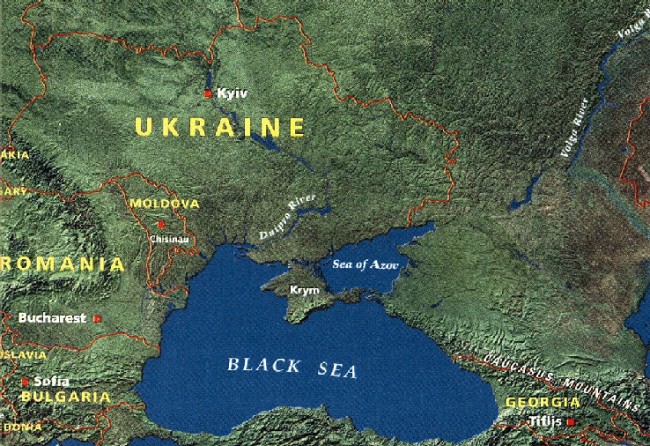
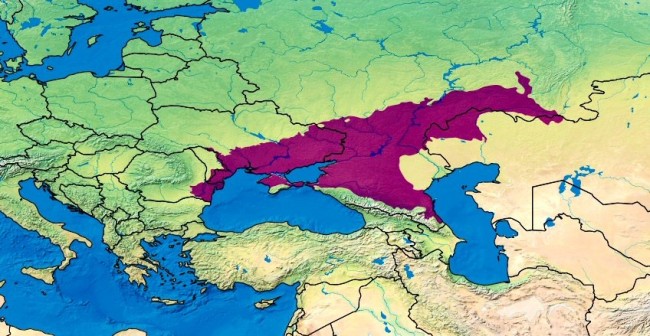
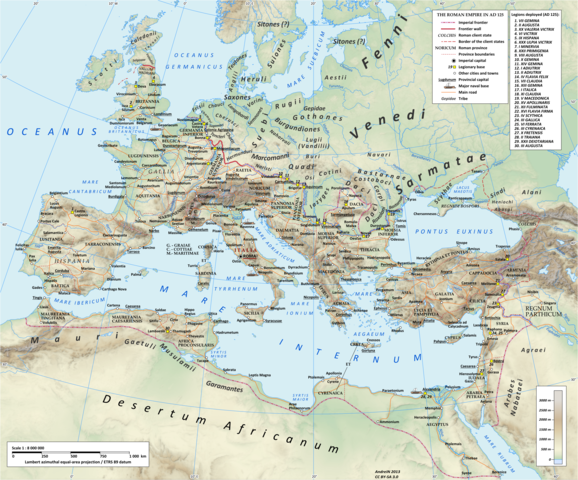
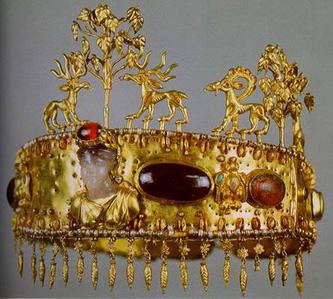
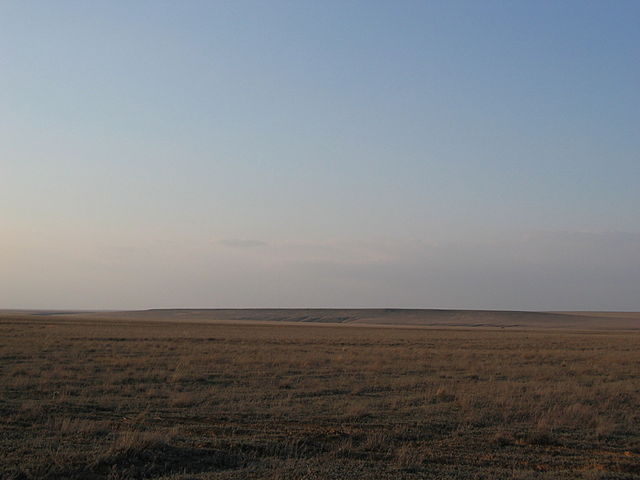
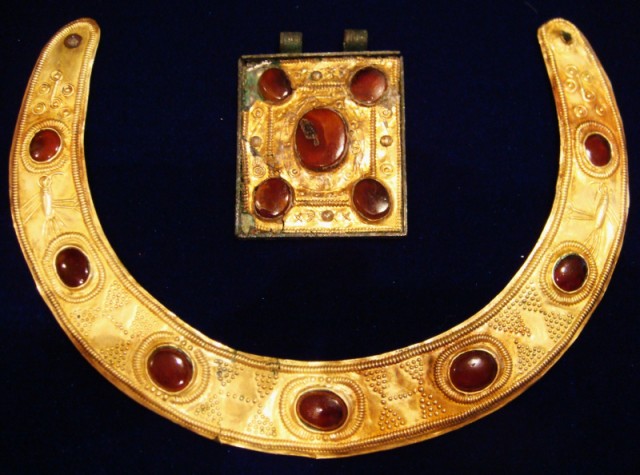
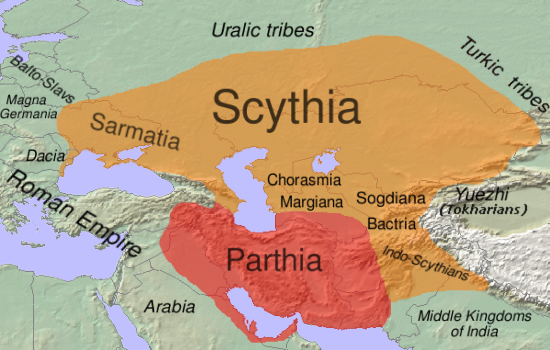
.jpg)
